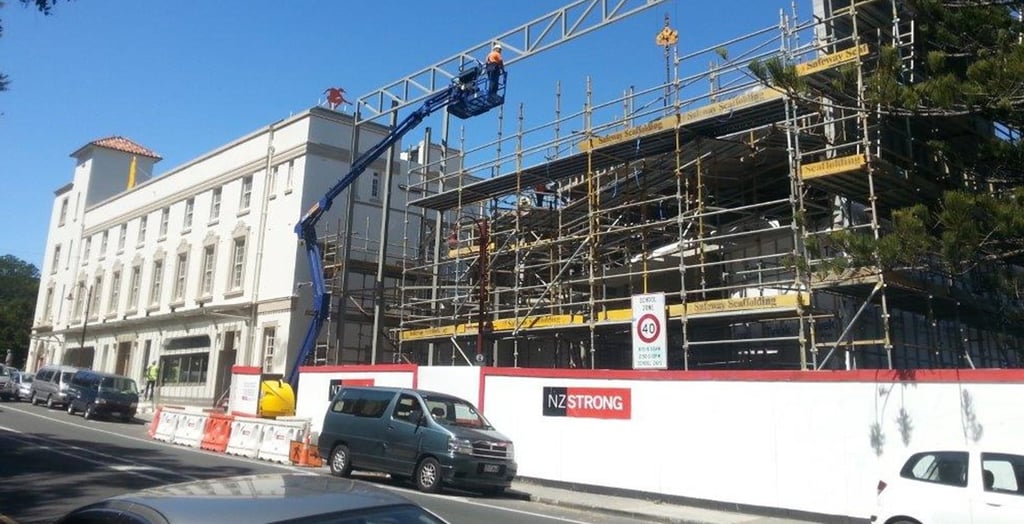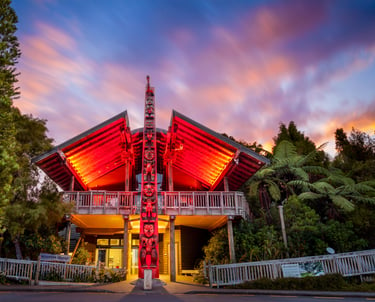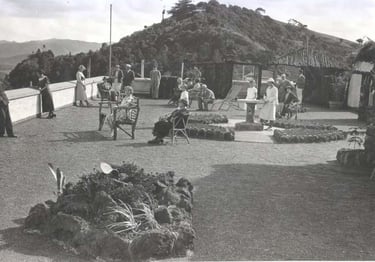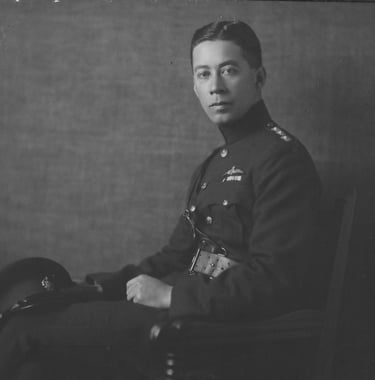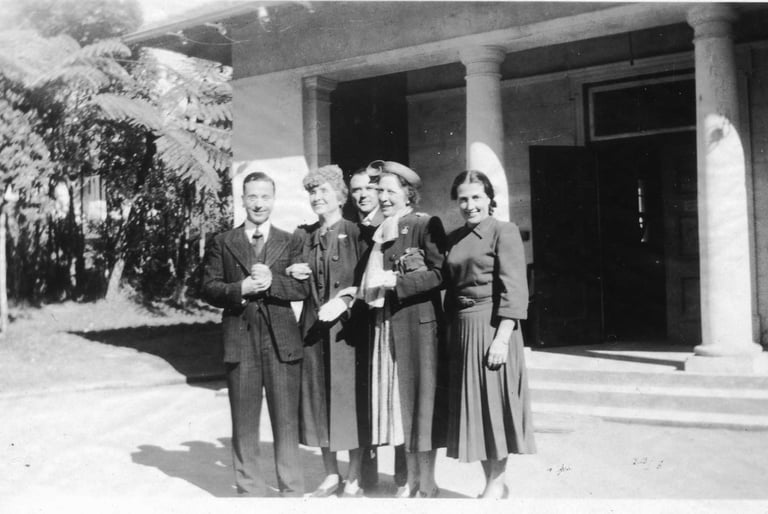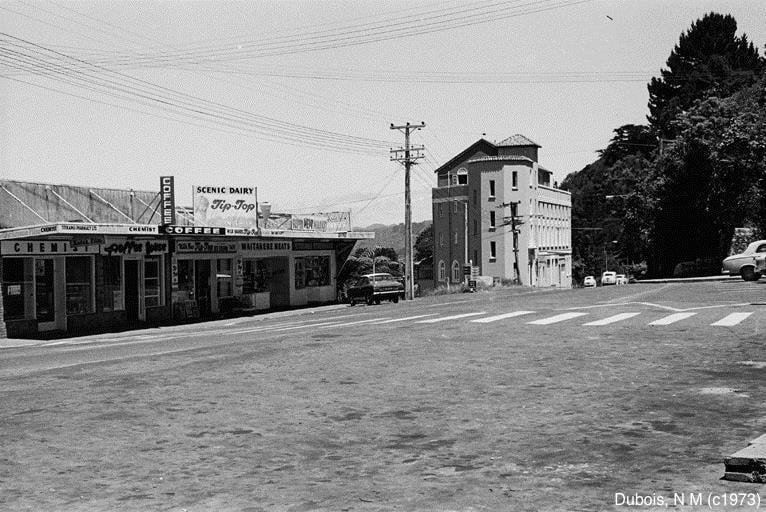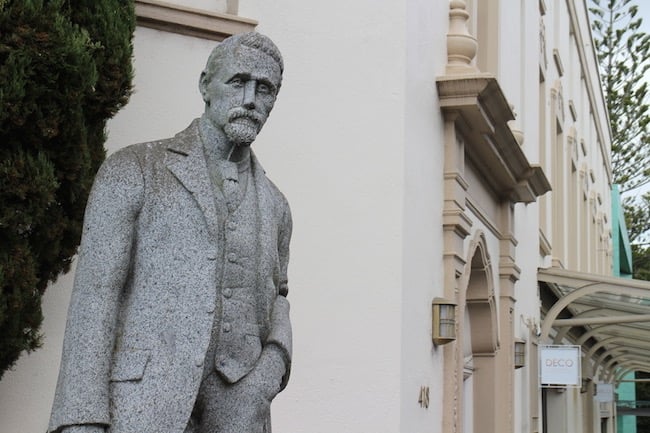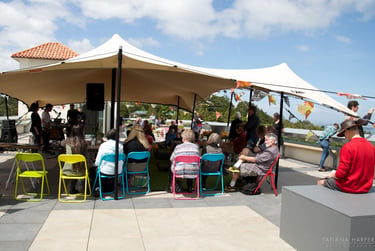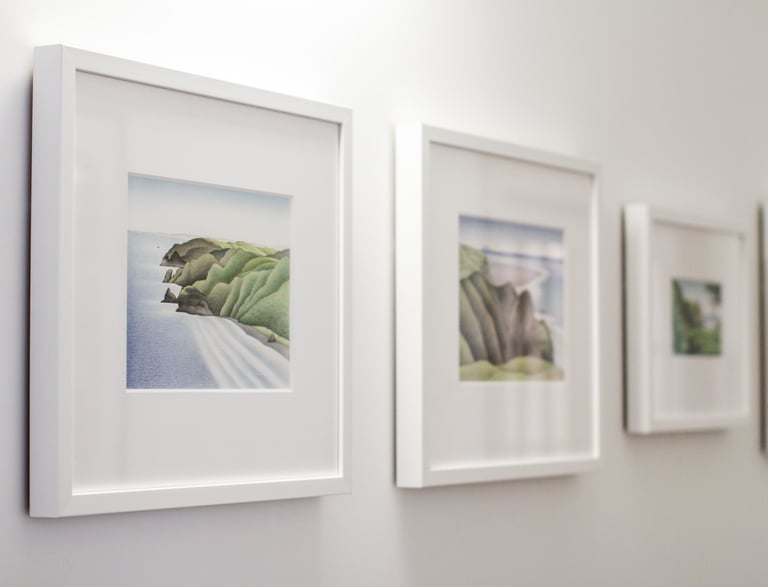Our History
The history of Lopdell House, The Treasure House and Te Uru Waitākere Contemporary Art Gallery
Since long before European arrival, Titirangi and the surrounding areas have been inhabited by Te Kawerau ā Maki, who remain mana whenua here today.
Although forests in the Waitākere Ranges were extensively felled by colonial timber businesses in the 1800s, moves to conserve the bush subsequently emerged as part of a wider appreciation of Aotearoa New Zealand's natural and cultural past.
Following the creation of numerous scenic and other reserves in the area - some donated by wealthy local businessman Henry Atkinson (1838-1921) - Titirangi became a significant tourist destination on the fringes of Auckland. Directly reflecting this, one of the settlement’s first tea kiosks was erected on the current site of Lopdell House, prior to 1917.
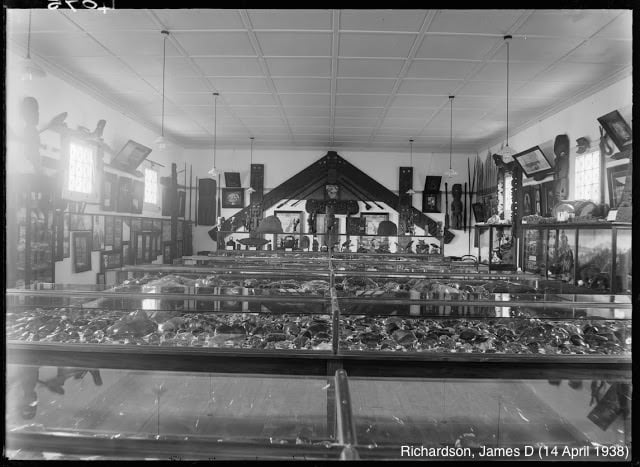

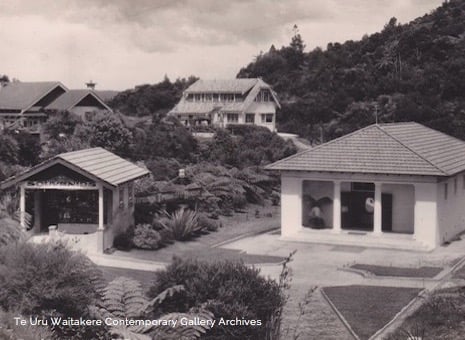

Inside the Treasure House, 1938
The Treasure House & grounds
Rooftop Garden of Hotel Titirangi, 1935
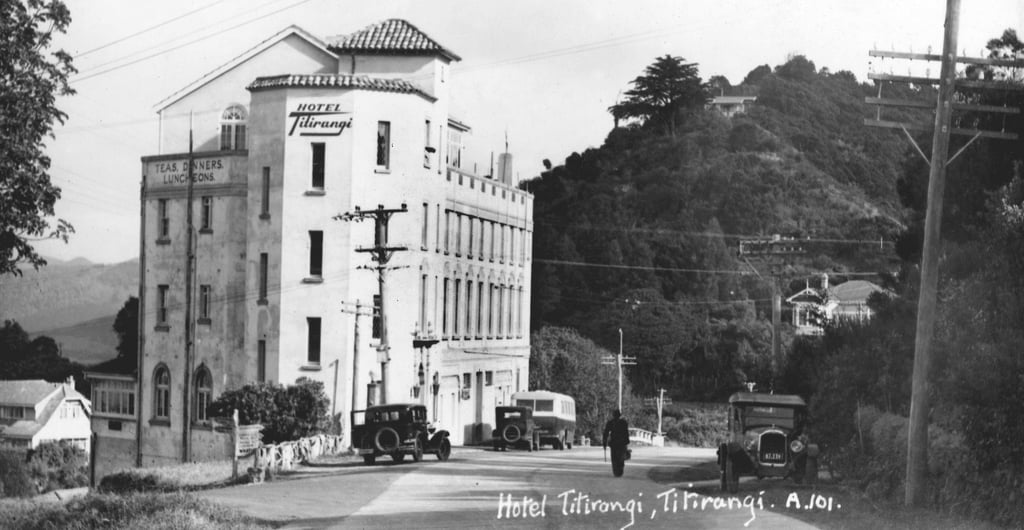

The hotel was sold in 1942 to the Department of Education, for use as a residential school for deaf children. It served all deaf, school-aged children born north of New Plymouth and Gisborne.
In 1960, when the school moved to purpose built premises in Glen Eden, the building was renamed Frank Lopdell House, after the Superintendent of Education. For the next 22 years, it offered residential training to in-service teachers from all over New Zealand.
Lopdell House in 1973
School for the Deaf, 1948
Auckland Council
1983 - 2012
In 1983 Lopdell House was purchased by the Waitematā City Council, and the landmark building was refurbished as an arts and cultural centre with studios, galleries and a 100-seat theatre.
The Lopdell House Development Trust was formed in 2002 by a group of community volunteers, concerned for the deteriorating building and the future of the arts activities it housed.
Support was provided by the Waitākere City Council and, when the supercity was formed, the new Auckland Council embraced the partnership.
Statue of Titirangi businessman, Henry Atkinson
